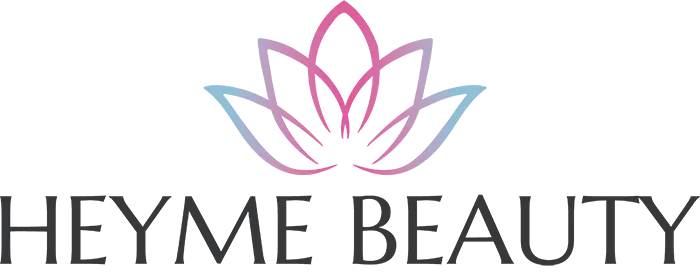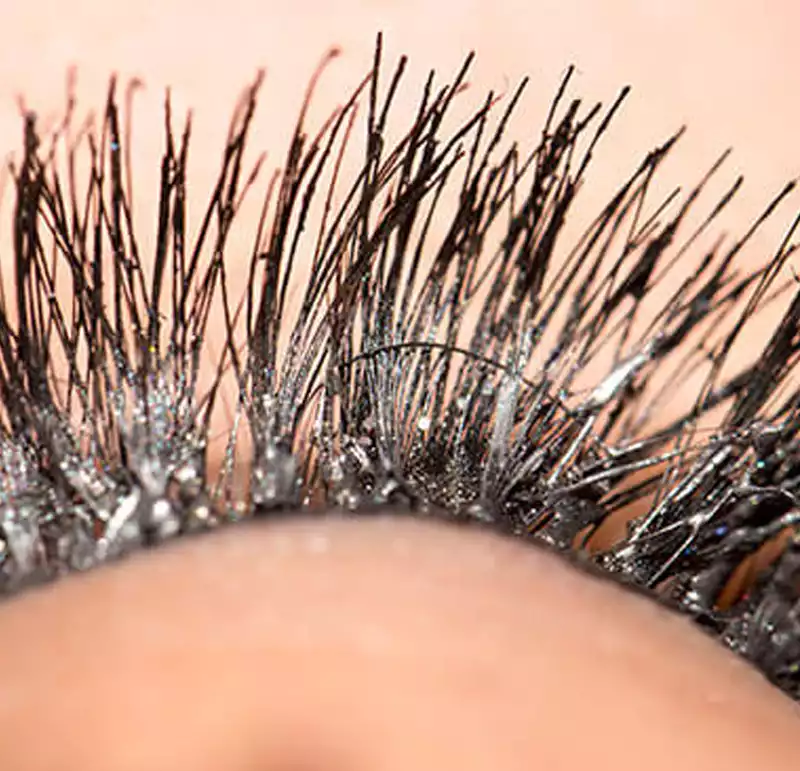2,592 views
If you’re considering getting eyelash extensions for the first time, you might be wondering if lash extensions hurt during and after the process.
Alternatively, if you’ve already had extensions applied and experienced some discomfort, you may be seeking answers. It’s not uncommon for my first-time clients to ask about the possibility of discomfort during the application process, given that the eyes are a sensitive area.
Do Lash Extensions Hurt?

When applied by a certified professional who uses high-quality products, eyelash extensions should not cause any pain. If you do experience discomfort during or after your appointment, it’s important to inform your lash stylist right away so they can address the issue.
The most common causes of pain related to eyelash extensions are improperly attached lashes and allergic reactions to the adhesive used.
Reasons Why Lash Extensions Hurt?
Lash extensions should not hurt when applied properly, but there are several reasons why you may experience discomfort or pain during or after the procedure. Here are some possible reasons:
Sensitivity:
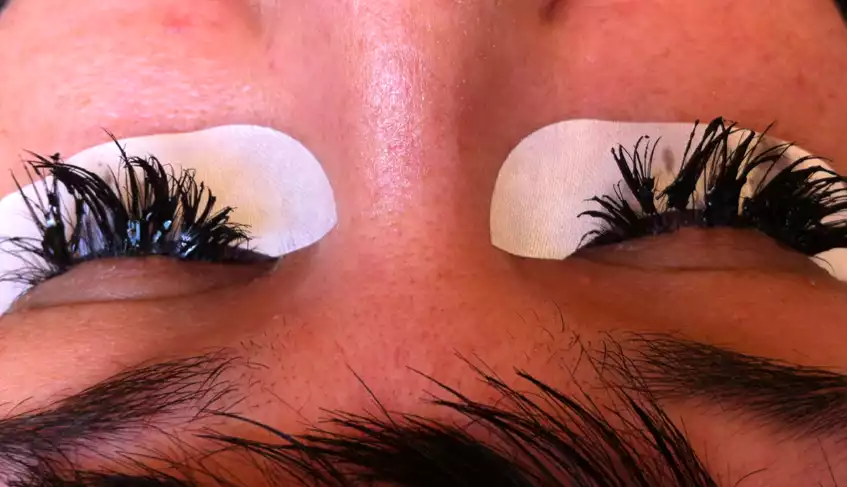
Some people have sensitive eyes, which can make getting lash extensions a potentially uncomfortable experience. This sensitivity can be caused by a variety of factors, such as allergies, dry eyes, or eye infections. The sensitive eye area can react to any slight disturbance, including the application of lash extensions, causing pain or discomfort.
Additionally, some people may experience discomfort due to the procedure itself. The process of applying the lash extensions involves using tweezers, glue, and other tools very close to the eyes, which can be a stressful experience for some individuals.
If you have sensitive eyes, it’s important to communicate this to your lash technician before the procedure. They can take extra precautions to make sure the process is as gentle and comfortable as possible. For example, they might use a different type of adhesive, use fewer lash extensions, or adjust the positioning to avoid contact with sensitive areas. In some cases, it may be necessary to avoid lash extensions altogether if they are causing too much discomfort.
Poor Application:
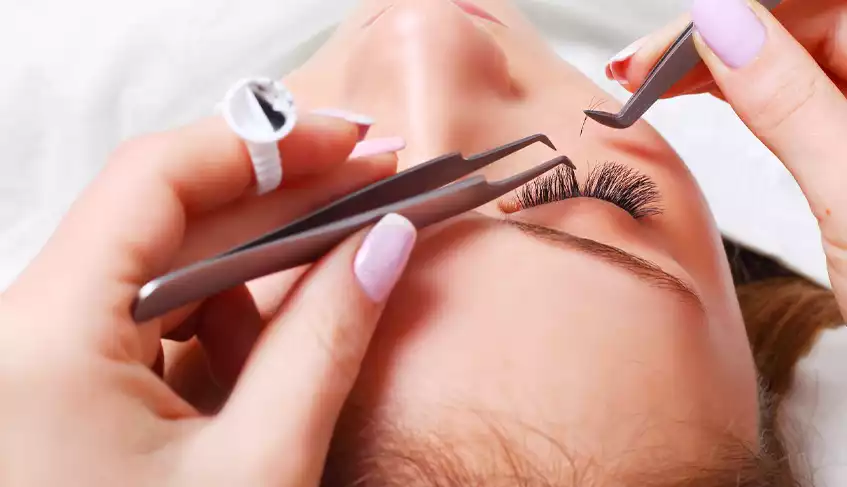
Improper application of lash extensions is another reason why they might hurt. If the lash extensions are not applied correctly, they can cause discomfort or irritation.
Some common reasons for poor application include:
- Improper lash selection: If the lash extensions are too long, thick, or heavy for your natural lashes, they can cause strain and discomfort.
- Incorrect placement: If the lash extensions are placed too close to the eyelid, they can rub against the skin and cause irritation.
- Poor isolation: Proper isolation of each individual natural lash is crucial to prevent extensions from sticking together or clumping. Poor isolation can cause discomfort, irritation, or even damage to your natural lashes.
- Adhesive overload: Using too much adhesive can create a bulky and heavy lash extension, causing strain and discomfort.
If you experience pain or discomfort during the application process, you should inform your lash technician immediately. They can adjust the application technique to reduce any discomfort and ensure that the extensions are applied correctly. It’s essential to choose a certified lash technician who has been trained in proper application techniques to minimize the risk of discomfort or other complications.
Allergic Reaction:

An allergic reaction to the adhesive used to attach the lash extensions is another possible reason why they might hurt. The adhesive contains cyanoacrylate, which is a common ingredient in many adhesives, including superglue.
If you are allergic to cyanoacrylate or any other ingredients in the adhesive, you may experience symptoms such as redness, itching, swelling, and pain. In some cases, the reaction can be severe and cause anaphylaxis, which is a life-threatening condition.
It’s essential to do a patch test before getting lash extensions to determine if you are allergic to the adhesive. A patch test involves applying a small amount of adhesive to your skin, usually behind your ear or on your arm, and waiting 24-48 hours to see if you have a reaction.
If you develop an allergic reaction after getting lash extensions, it’s important to remove the extensions immediately and seek medical attention if necessary. You should also inform your lash technician of the reaction so they can switch to a different type of adhesive or make other adjustments to avoid future reactions.
Too Long Lash Extensions

One of the common reasons why lash extensions might hurt is when they are too heavy or too long for your natural lashes. The weight of the extensions can cause tension and discomfort on your natural lashes, leading to pain or even damage to your real lashes.
When selecting lash extensions, it’s important to consider the weight and length of the extensions in relation to your natural lashes. Your lash technician should select extensions that are lightweight and the right length to ensure they don’t cause any discomfort or tension on your natural lashes.
In some cases, your lash technician might recommend a shorter or lighter lash extension to prevent any strain on your natural lashes. Alternatively, they might use a different type of extension that is lighter in weight, such as mink or silk lashes.
It’s important to communicate any discomfort or pain during the application process to your lash technician, who can adjust the length, weight, or positioning of the lash extensions to make them more comfortable. Proper application by a trained professional and proper lash selection can prevent discomfort and ensure that you enjoy the benefits of lash extensions without any pain.
Poor Aftercare:
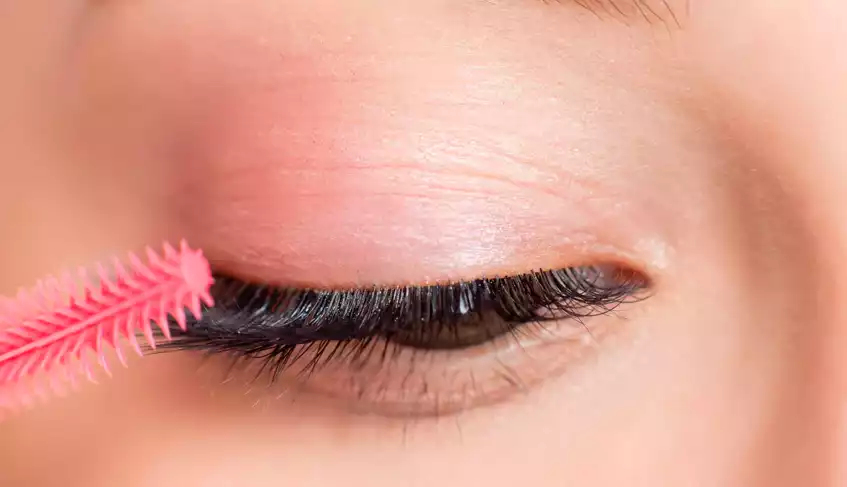
Poor aftercare can also be a reason why lash extensions might hurt. Lash extensions require proper care to maintain their appearance and prevent any discomfort or pain.
Some common mistakes in aftercare that can cause pain or discomfort include:
- Rubbing or pulling on the lash extensions: This can cause the extensions to fall out prematurely and damage your natural lashes, leading to discomfort or pain.
- Sleeping on your stomach or side: Sleeping on your stomach or side can cause your lashes to become tangled, leading to discomfort or pain.
- Getting the extensions wet too soon: Getting the lash extensions wet too soon after application can cause the adhesive to weaken, leading to discomfort or pain.
- Using oil-based products: Oil-based products can break down the adhesive and cause the extensions to fall out prematurely, leading to discomfort or pain.
It’s important to follow the aftercare instructions provided by your lash technician to prevent any discomfort or pain. Proper aftercare includes avoiding water, and oil-based products, and rubbing or pulling on the extensions for at least 24 hours after application. After this period, you should clean your lash extensions daily using a specially formulated lash cleanser and avoid sleeping on your stomach or side.
If you experience any discomfort or pain after getting lash extensions, it’s important to communicate with your lash technician to identify the cause and take appropriate steps to resolve it.
Lash Tension:

Lash tension occurs when the extensions are not applied evenly or when they are too close to the eyelid, causing them to pull or tug on the natural lashes.
When lash extensions are applied, they should be attached to a single natural lash, ensuring that there is no tension or strain on the lash. If the extensions are applied too close to the eyelid, they can tug on the natural lashes, causing discomfort or pain.
Additionally, if too many lash extensions are applied to a single natural lash, it can cause tension and discomfort. This is because the weight of the extensions is not distributed evenly across the natural lashes.
To avoid lash tension, it’s essential to select a trained and certified lash technician who has experience in applying lash extensions. The technician should apply the extensions carefully and evenly to ensure that there is no strain or tension on the natural lashes.
If you experience any discomfort or pain during the application process or after getting lash extensions, it’s important to communicate with your lash technician immediately. They can identify the cause of the discomfort and make appropriate adjustments to ensure that the extensions are applied comfortably and safely.
Chemical Irritation:
The adhesive used to attach lash extensions contains chemicals that can cause irritation or an allergic reaction in some people.
Symptoms of chemical irritation or an allergic reaction can include redness, itching, burning, or swelling of the eyes or eyelids. In severe cases, it can cause pain and discomfort, and even lead to infection or lash loss.
To avoid chemical irritation or an allergic reaction, it’s important to have a patch test before getting lash extensions. A patch test involves applying a small amount of the adhesive to your skin to check for any allergic reactions.
If you have a history of allergic reactions or sensitive skin, you may be at a higher risk of experiencing chemical irritation from lash extensions. It’s important to communicate this to your lash technician, who can recommend a suitable adhesive that is less likely to cause irritation.
If you experience any discomfort or pain during the application process or after getting lash extensions, it’s important to communicate with your lash technician immediately. They can identify the cause of the discomfort and make appropriate adjustments to ensure that the extensions are applied comfortably and safely. In severe cases of chemical irritation or allergic reaction, it’s important to seek medical attention immediately.
Poor Lash Hygiene:
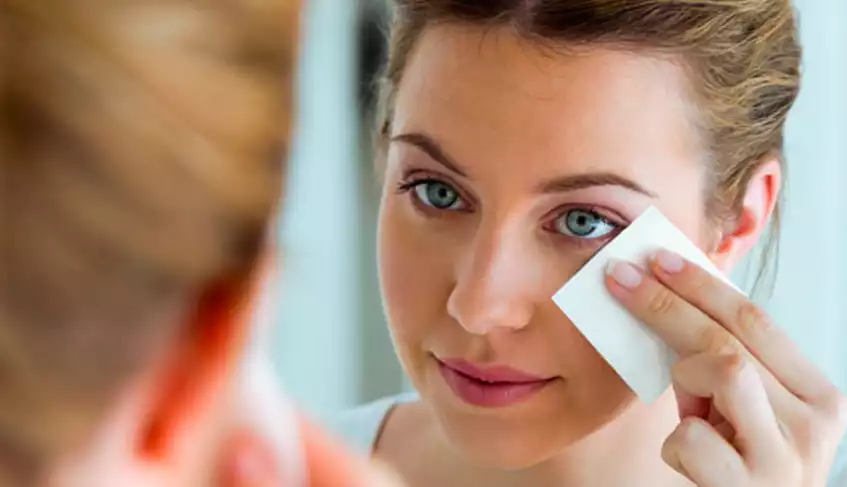
Lash extensions require proper hygiene to maintain their appearance and prevent any discomfort or pain.
When lash extensions are applied, they can trap dirt, oil, and bacteria between the natural lashes and extensions. If left uncleaned, this can cause irritation, infection, or even lash loss.
To avoid poor lash hygiene, it’s essential to clean your lash extensions daily using a specially formulated lash cleanser. This will remove any dirt, oil, lash mites, or bacteria that may have accumulated between the natural lashes and extensions. It’s also important to avoid using oil-based products or makeup removers, as these can break down the adhesive and cause the extensions to fall out prematurely.
In addition to daily cleaning, it’s important to avoid touching or rubbing your eyes, as this can transfer bacteria or oil to the lash extensions, leading to irritation or infection. It’s also important to avoid using eyelash curlers, as these can damage the extensions and natural lashes, causing discomfort or pain.
If you experience any discomfort or pain after getting lash extensions, it’s important to communicate with your lash technician to identify the cause and take appropriate steps to resolve it. Proper lash hygiene is essential to prevent discomfort or pain and maintain the appearance and health of your lash extensions.
Medical conditions:
Certain medical conditions or medications can affect the health and sensitivity of the eyes, causing discomfort or pain when lash extensions are applied.
For example, if you have a condition such as dry eye syndrome, allergies, or blepharitis, the application of lash extensions can cause irritation or exacerbate your symptoms. Similarly, if you are taking medications such as Accutane or chemotherapy drugs, your eyes may be more sensitive and prone to discomfort or pain.
If you have any underlying medical conditions or are taking medications that may affect your eyes’ sensitivity, it’s important to communicate this to your lash technician before getting lash extensions. They can assess the potential risks and make recommendations for alternative lash treatments or products that are less likely to cause discomfort or pain.
If you experience any discomfort or pain during the application process or after getting lash extensions, it’s important to communicate with your lash technician immediately. They can identify the cause of the discomfort and make appropriate adjustments to ensure that the extensions are applied comfortably and safely. In some cases, it may be necessary to consult with an eye doctor or other healthcare provider to address any underlying medical conditions.
There are several reasons why lash extensions might hurt, ranging from poorly attached extensions to an allergic reaction to the adhesive or underlying medical conditions. However, when applied properly by a certified professional using high-quality products, lash extensions should not cause discomfort or pain. It’s essential to communicate with your lash technician and follow proper lash hygiene to maintain the appearance and health of your lash extensions and prevent any discomfort or pain.
If you experience any discomfort or pain during or after getting lash extensions, it’s important to communicate with your lash technician immediately to identify the cause and take appropriate steps to resolve it.
Why Lash Extensions Hurt After the Appointment
The table below provides a clear and concise overview of the different reasons why lash extensions may cause hurt, including itchiness, swelling, tangling, eye infections, uneasiness, and bloodshot eyes. By identifying these symptoms, clients can communicate more effectively with their lash technician and take appropriate measures to prevent or alleviate any discomfort or pain.
| Reason | Description |
|---|---|
| Itchiness | Your lash line may feel itchy soon after an appointment that may extend for days or weeks. It may be localized occurring solely around the lash line or may expand to the eyelids and inside the eye. Blepharitis is another condition where the eyelids tend to itch and hurt. Keep in mind that it may happen in one or both eyes. |
| Swollen | Mild irritation soon after getting eyelash extensions often comes with inflammation. You might notice your eyes are sore and hard to open too. Swollen eyes are typical symptoms of an allergic reaction to the lash adhesive. |
| Tangled | You might feel your eyelashes are twisted and tangled after your first wash. This is quite normal unless it becomes a long-term issue even after cleaning. |
| Eye infection | A bacterial infection like a sty looks like a pimple. It can cause pain and often comes with a red bum alongside the edge of the eyelids. |
| Uneasiness | For some people, eyelash extensions may feel too heavy, long, or thick such that it pains them to open and close their eyes as usual. |
| Bloodshot eyes | It’s possible to develop red eyeballs two to three days after your lash extension treatment. Such a reaction may be accompanied with or without pain and often to both eyes. |
Final Thoughts
In conclusion, while lash extensions can enhance your natural lashes and provide a more dramatic look, they can also cause discomfort or pain if not applied or maintained properly. It’s important to choose a certified lash technician who uses high-quality products and follows proper hygiene and safety protocols during the application process.
Additionally, it’s essential to communicate with your lash technician about any discomfort or pain you experience during or after the appointment, as this can help identify and address the underlying cause. Proper lash hygiene and regular maintenance can also help prevent discomfort or pain and maintain the health and appearance of your lash extensions.
By following these guidelines, you can enjoy the benefits of lash extensions without the risk of discomfort or pain.
If you are continuously experiencing pain or discomfort from your lash extensions, it is recommended to visit the salon for an inspection. After an evaluation, the lash stylist may suggest carefully removing the extensions to alleviate any discomfort.
